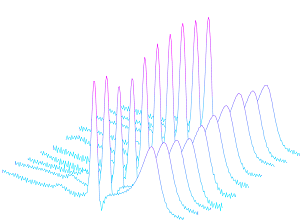Introduction
 This book provides both a theoretical and a practical understanding of many of the state-of-the-art techniques for for electrocardiogram (ECG) data analysis. Placing an emphasis on the fundamentals of signal etiology, acquisition, data selection, and testing, this comprehensive resource presents guidelines to design, implement, and evaluate algorithms used for the analysis of ECG and related data. Additionally, explanations of open source software and related databases for signal processing are given.
Topics covered include physiological etiology, hardware acquisition and filtering, time-frequency quantification of the ECG and derived signals (including heart rate variability and respiration), an analysis of noise and artifact, models for ECG and RR interval processes, linear and nonlinear filtering techniques and adaptive algorithms such as neural networks.
Much of the book is devoted to deriving robust, clinically meaningful metrics such as the QRS axis, QT-interval, the ST-level, and T-wave alternans. Methods for applying these metrics to clinical classification are also discussed,
together with supervised and unsupervised classification techniques.
Including over 190 illustrations and more than 300 equations, the book offers a solid grounding in the relevant basics of physiology, data acquisition and database design, and addresses the practical issues of improving existing data analysis methods and developing new applications.
My co-editors on this book are
Francisco Azuaje
and
Patrick McSharry.
This book provides both a theoretical and a practical understanding of many of the state-of-the-art techniques for for electrocardiogram (ECG) data analysis. Placing an emphasis on the fundamentals of signal etiology, acquisition, data selection, and testing, this comprehensive resource presents guidelines to design, implement, and evaluate algorithms used for the analysis of ECG and related data. Additionally, explanations of open source software and related databases for signal processing are given.
Topics covered include physiological etiology, hardware acquisition and filtering, time-frequency quantification of the ECG and derived signals (including heart rate variability and respiration), an analysis of noise and artifact, models for ECG and RR interval processes, linear and nonlinear filtering techniques and adaptive algorithms such as neural networks.
Much of the book is devoted to deriving robust, clinically meaningful metrics such as the QRS axis, QT-interval, the ST-level, and T-wave alternans. Methods for applying these metrics to clinical classification are also discussed,
together with supervised and unsupervised classification techniques.
Including over 190 illustrations and more than 300 equations, the book offers a solid grounding in the relevant basics of physiology, data acquisition and database design, and addresses the practical issues of improving existing data analysis methods and developing new applications.
My co-editors on this book are
Francisco Azuaje
and
Patrick McSharry.
The following excerpts are available:
Software associated with this book can be found here. The book is published by Artech House and is available for purchase now at a discounted price, with delivery for October 2006.The following set of links for each chapter provide more detail on each chapter and relevant links to software and related information.
- Chapter 1 The Physiological Basis of the Electrocardiogram
- Chapter 2 ECG Acquisition, Storage, Transmission, and Representation
- Chapter 3 ECG Statistics, Noise, Artifacts, and Missing Data
- Chapter 4 Models for ECG and RR interval Processes
- Chapter 5 Linear Filtering Methods
- Chapter 6 Nonlinear Filtering Methods
- Chapter 7 Pathophysiology Guided T-Wave Alternans Measurement
- Chapter 8 ECG-Derived Respiratory Frequency Estimation
- Chapter 9 ST analysis
- Chapter 10 Introduction to Feature Extraction
- Chapter 11 Probabilistic Approaches to ECG Segmentation and Feature Extraction
- Chapter 12 Supervised Learning for ECG Classification; Neural Networks & SVMs
- Chapter 13 An Introduction to Unsupervised Learning for ECG Classification
Although we went through many proofs of the manuscript, and had many friends, realtives and colleagues help proof-read the book (thank-you!), typos and errors will persist. Some are trascription errors from type-setting by the publisher, some are our own typos, and some may even be technical errors. In some cases there may be inconsistencies between US and UK spellings. Contributers to this book have used both 'versions'. My preference is for hyphenation and UK spellings, but the publisher insisted on US spellings and concatonation of hyphenated words. I fought hard against this, and lost. I offer my apologies if it seems we have invented new words; we did not mean to. If you find any more errata, please email me with them at gari AT ecgtools DOT org. Current errata can be found here.